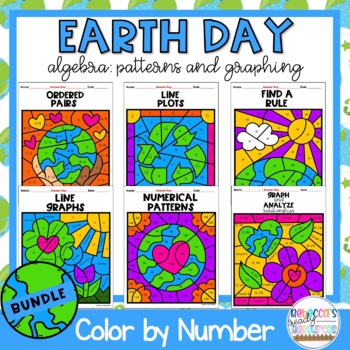Earth Day Algebra Patterns and Graphing 5th Grade Math Color by Number Bundle
- Zip
Products in this Bundle (6)
showing 1-5 of 6 products
Description
This Earth Day Math Color by Number Bundle is perfect for your students to practice algebra: patterns and graphing!
Save $$$$$. Buy the bundle! This color by number math bundle contains six products with an Earth Day theme. Each product is perfect for math centers, early finishers, homework, independent work, or review.
The activities in this bundle align with:
5.G.A.1
5.G.A.2
4.MD.B.4
5.MD.B.2
5.OA.B.3
Skills covered:
- Ordered Pairs
- Line Plots with Fractions
- Line Graphs
- Numerical Patterns
- Find a Rule Input/Output Tables
- Graph and Analyze Relationships
No prep! Just print the black & white versions of the worksheet and the color sheet for your students.
Each product in the bundle contains:
-an Earth Day-themed color by number math puzzle color sheet
-a worksheet with problems
-two answer keys (one for the color sheet and one for the worksheet)
*Follow my store by clicking on the green star above! More color by number products are to come. By following my store, you will be notified by email when I upload a new product.
*Remember to leave feedback! You can earn TpT credits to save money when you buy future products.
*Click on the "Pin it" button at the top of this page to share on Pinterest! If you like this product, others may like it too.
Thanks,
Rebecca





